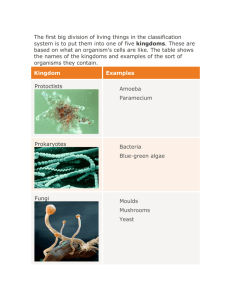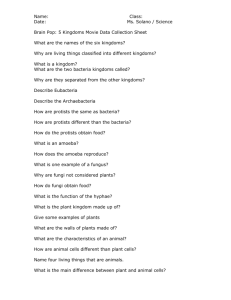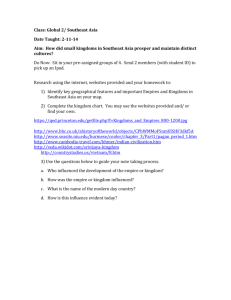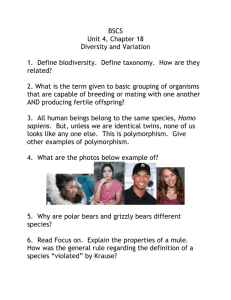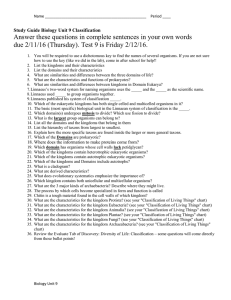Name: Period: 1 2 3 4 5 6 7 Date: Kingdoms of Life Study Guide 1
advertisement
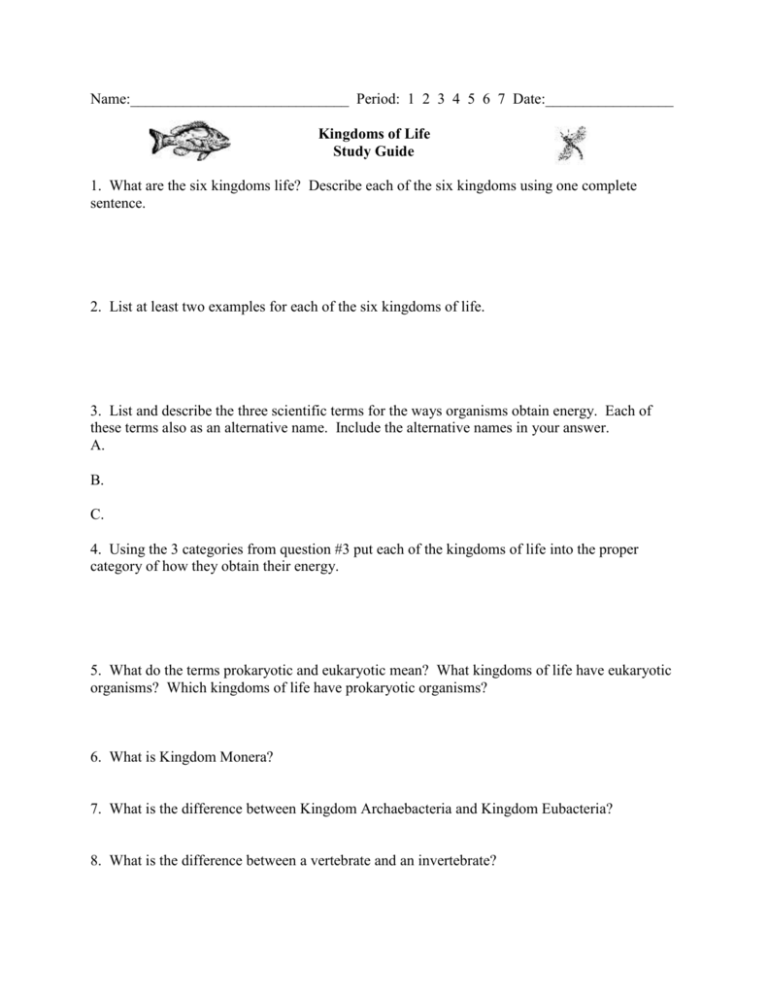
Name:_____________________________ Period: 1 2 3 4 5 6 7 Date:_________________ Kingdoms of Life Study Guide 1. What are the six kingdoms life? Describe each of the six kingdoms using one complete sentence. 2. List at least two examples for each of the six kingdoms of life. 3. List and describe the three scientific terms for the ways organisms obtain energy. Each of these terms also as an alternative name. Include the alternative names in your answer. A. B. C. 4. Using the 3 categories from question #3 put each of the kingdoms of life into the proper category of how they obtain their energy. 5. What do the terms prokaryotic and eukaryotic mean? What kingdoms of life have eukaryotic organisms? Which kingdoms of life have prokaryotic organisms? 6. What is Kingdom Monera? 7. What is the difference between Kingdom Archaebacteria and Kingdom Eubacteria? 8. What is the difference between a vertebrate and an invertebrate? 9. What do the terms bilateral symmetry and radial symmetry mean? List an example of an organism that has bilateral symmetry and an example of organism that has radial symmetry. 10. List and describe the 3 classification groupings of protists. A. B. C. 11. List 2 ways that bacteria are harmful and 2 ways bacteria are helpful. 12. Amoebas, Paramecium, and Euglena are all common protists that you might find in pond water. Describe the cellular structures these organisms use to move and the way in which they get energy (or eat). A. Amoebas: B. Paramecium: C. Euglena: 13. How do fungi obtain food if they can’t move? 14. List two ways that fungi are harmful to humans and 2 ways they are beneficial to humans. 15. What are the 7 levels of classification? 16. What is a domain? What are the 3 domains of life? 17. What’s the difference between biogenesis and spontaneous generation? 18. Describe the process of photosynthesis in as much detail as you can. What goes in and what comes out of the chemical process? 19. List the 7 common characteristics of living things. In a separate sentence describe what this characteristics actually means. (Describe it) 20. What is taxonomy? 21. What is binomial nomenclature? 22. What is classification? 23. List and describe 3 reasons why classification is important in science. A. B. C. 24. What are some characteristics that are good to use when classifying organisms and what are some characteristics that are bad to use when classifying organisms? Good: Bad: 25. What was Redi’s experiment? What popular theory did it disprove? 26. Charles Darwin came up with a theory we still use today called natural selection. Jean Baptiste Lemarck came up with a competing theory that was proved incorrect called acquired traits. Describe each of these theories below. 27. List and describe some of the common groups, families, and phyla in the animal kingdom.



